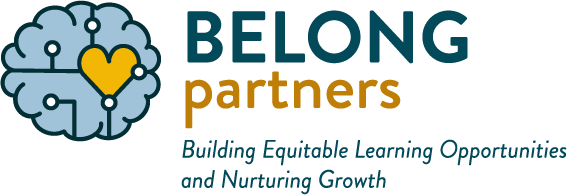“Play is a strategy for learning at any age. While older students and their teachers might have more curricular demands than younger students, playful learning still has an important role to play…”
– Project Zero Researcher Mara Krechevsky, Harvard Graduate School of Education
After years of pandemic disruption, are we feeling pressure to catch students up? Are you wrestling with the gap between what you feel you must do, and what you know is best for your students?
Here are some ideas to hopefully lighten that load and remind you of something you probably already know. Learning is play. Play is learning.
That is the message from the authors of Purposeful Play; play can ease tension and help students’ brains become more open to learning and retaining information. They write, “We believe there is play in work and work in play.” Play increases student participation, enhances feelings of connection to the material and to the classroom community. It can shift the mood from have to, to want to…doesn’t that sound welcome right about now?
As we deal with the ongoing impact of the pandemic and global protests about racism and systemic inequalities, wars, and constancy of gun violence, our children are being exposed to painful and often scary things. In this article from Edutopia, authors describe the power of play to move children through fear, anxiety, grief, and loss. Play, they say, will reflect their efforts to make sense of what they see and hear.
Here are some ideas to consider for (re)weaving play into learning:
Team up: Connect with classrooms from different grades to provide children of all ages with opportunities to play and interact with other students. Older students can lead younger students in games, as if they are the camp counselors facilitating the play with younger students in the community.
Integrate purposeful play: All grade levels benefit from getting out of their heads and into their bodies. Micro-moments of playfulness invite students to be more energized and focused. This Edutopia article explores play-based learning ideas.
Encourage Free Play: Educators can support students by remaining non-judgmental and present during free play. Sometimes adding additional props or questions to guide toward healing can be useful.
Bring playground games into the classroom: ‘Simon Says’, ‘Duck, Duck, Goose’, and ‘Red Light/Green Light’ can all be played in the classroom to lighten the mood and inspire full engagement. Social-emotional skill building underlies these cooperative games – and they are fun!
Join in on the play! Kids are watching you. They take their cue from you. And we know that mirror neurons are powerful; we can transfer emotions from person to person. When you are having fun, it builds connection with your students and the joy spreads.
Get outside! As the weather warms up, bring learning outdoors. Just the environmental shift into the sun and fresh air and the novelty of bringing learning beyond the classroom walls may enliven learning and inspire engagement. Invite students to join you on a nature walk, read with a buddy outside, or play a class/group game.
How are you getting creative to keep play in the learning day? We’d love to hear your stories.
Glenda Montgomery is a Sound Discipline Facilitator.
